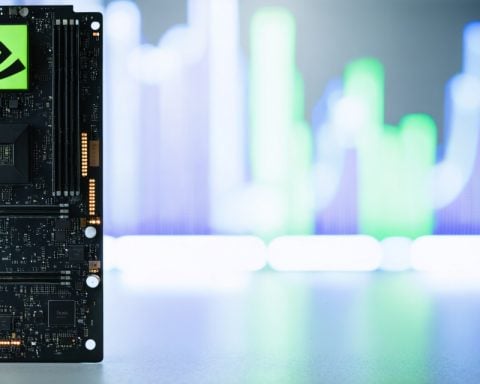- South Korea strengthens safety regulations for electric vehicles and educational facilities, effective February 2023.
- New amendments to the Motor Vehicle Management Act require EV batteries to have identification numbers for tracking and government safety certification.
- EV battery safety checks will occur every three years to maintain high standards and consumer confidence.
- The regulations arose in response to an electric vehicle fire incident in Incheon, highlighting the need for stringent safety measures.
- School construction standards now mandate earthquake-resistant sprinklers and firefighting systems in new educational buildings.
- The overarching goal is to proactively integrate safety, ensuring the protection of citizens and infrastructure.
On an icy February morning, the words “safety first” echo through South Korea’s regulatory landscape. New amendments promise to change the way the nation views its electric vehicles and educational facilities, weaving safety into their very fabric.
Starting February 17, a groundbreaking shift in the Motor Vehicle Management Act mandates automakers to secure government certification for the safety of their EV batteries. Each battery must now carry an identification number, a digital passport of sorts, to be meticulously tracked throughout its lifecycle. This innovation springs forth not just from environmental stewardship, but from necessity—a firestorm was ignited last year when an electric Mercedes-Benz blazed through an apartment complex in Incheon, wreaking havoc and causing millions in damages.
The new law demands heightened vigilance. Certified batteries will undergo checks every three years, pushing manufacturers to maintain uncompromising standards and reassuring consumers that their rides are not just sleek, but safe.
Simultaneously, the spirit of safety extends to the realm of education. As of February 7, school construction blueprints have been rewritten. Sprinklers and firefighting systems must now be standard in every pillar of new educational establishments, from kindergartens to lecture halls. These aren’t typical installations; they are designed to withstand the tremors of an earthquake, marrying durability with crisis readiness.
The takeaway is clear: South Korea isn’t merely reacting to past calamities but is engineering a future where safety is a forethought, not an afterthought. As batteries power on and schools educate the future, these laws ensure a protective embrace over the nation’s most cherished entities.
Revolutionizing Safety in South Korea: The Impact of New EV and Educational Facility Regulations
How-to Steps & Life Hacks
1. Understanding EV Battery Certification:
– Step 1: Before purchasing an electric vehicle (EV) in South Korea, check if the EV’s battery has government certification.
– Step 2: Ensure the battery has a visible identification number for efficient tracking.
– Step 3: Schedule inspections every three years with an authorized dealer to maintain compliance.
2. Enhancing School Safety:
– Step 1: If involved in school construction or renovations, ensure designs include seismic-resistant sprinklers and firefighting systems.
– Step 2: Regularly test these safety systems to ensure functionality in emergency scenarios.
Real-World Use Cases
– Automakers: Companies can use these regulations to enhance their brand image by showcasing their commitment to safety and sustainability.
– Educational Institutions: Schools can boost enrollment by advertising their upgraded safety features, appealing to safety-conscious parents.
Market Forecasts & Industry Trends
– Electric Vehicle Market: The global EV battery market is expected to grow significantly, with an increased focus on battery safety standards.
– Construction Industry: Demand for advanced fire protection systems in educational facilities is anticipated to rise, influencing global safety standards in architecture.
Reviews & Comparisons
– EV Battery Regulations: Experts argue that South Korea’s approach could set a precedent, potentially influencing EU and US safety regulations (source: International Energy Agency).
– School Safety Standards: South Korean schools are now poised to become among the safest globally, potentially surpassing international standards in earthquake resilience.
Controversies & Limitations
– Cost Implications: Critics note the high costs for automakers and educational institutions to comply with the new regulations, which could be passed down to consumers and taxpayers.
– Implementation Challenges: There may be initial resistance from stakeholders due to the complex logistics involved in retrofitting existing infrastructure with new safety systems.
Features, Specs & Pricing
– Battery ID System: Digital tracking of EV batteries allows for more effective recycling and monitoring of battery health and safety.
– Firefighting Systems: Features include advanced heat detection and suppression technologies designed to function during seismic activities.
Pros & Cons Overview
– Pros:
– Enhanced consumer confidence in EV safety.
– Improved safety and crisis management in educational facilities.
– Encourages technological innovation in safety systems.
– Cons:
– Increased costs for manufacturers and institutions.
– Potential logistical challenges in initial implementation.
Actionable Recommendations
– For Consumers: Always verify the safety certification of an EV before purchase. Opt for educational institutions that have advanced safety features in place.
– For Businesses: Stay informed about regulations to ensure compliance. Invest in innovation to reduce long-term costs and improve safety measures.
For more insights into electric vehicles and educational safety regulations, visit the official sites of the Korean Electric Vehicle Association and the Ministry of Education, Korea.














